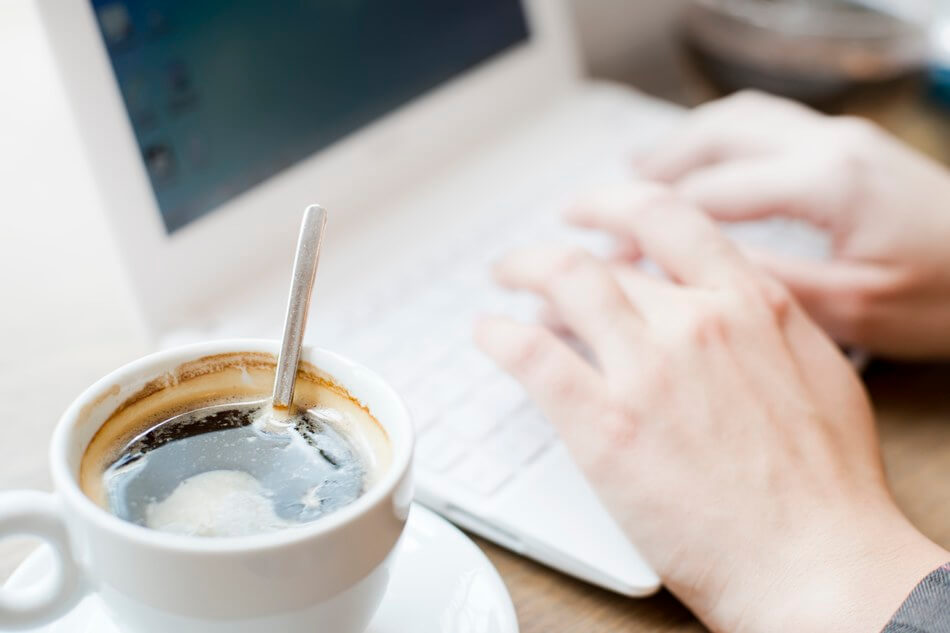Whether you work from home or in a cubicle, one thing is almost always certain—a messy desk has a way of interrupting our workflow. Want proof? A 2011 study out of the Princeton Neuroscience Institute found that cluttered, untidy environments impair our ability to stay on task.
Is your workspace blocking your productivity?

iStock
Experts advise extending your spring cleaning efforts directly to your workspace. Office organizing expert Kacy Paide says that the mess will continue distracting you until you address it.
“There’s this nagging voice in the back of most people’s heads that makes them feel guilty if they’re not organizing,” she says. “I’ve worked with clients who’ve had that voice in their heads for decades.”
If the thought of organizing your workspace has you running for the hills, rest easy; we’ve nailed down everything you need to know to boost your productivity to the next level.
GROUP LIKE WITH LIKE
Before you start trashing stuff, you first need to do an audit of what’s actually in your workspace. In other words, pinpoint where the biggest concentration of junk is.
“I always teach people about the power of grouping like with like,” says Paide. “It’s an easy, open-ended method that can be as simple as separating paper from office supplies.”
The approach can be an especially good place to start for people who are generally hesitant to tackle the project. Go through your desk drawers, cabinets, wall space—you name it. Once you start creating piles, you’ll naturally see what’s making up the bulk of your clutter.
From there, let the piles lead your to-do lists. For example, you’ll likely have a pile of paper that requires some sort of action (like a phone call or a bit of research). Another pile may be things you use often and that need to be kept within reach, while another stack might be things that can be archived away. The point is that seeing it all right in front of you will set your organizing wheels in motion.
“Arrange your office so that all of the equipment and supplies you use regularly are within reach, and store extra supplies in one place,” says Lisa Kanarek, the founder of WorkingNaked.com and the author of books like “Organize Your Home Office For Success.”
GET RID OF THE JUNK
Optimizing your workspace for productivity involves trashing the stuff you don’t use.
“Start with the low-hanging fruit,” says Paide, who likes to ask her clients where they think the highest concentration of trash is in their office. “Start with what’s obvious and easiest, then work your way up to some of the harder decisions.”
Tip: if you often have trouble finding things, then an out-of-control junk drawer is probably the best place to start.
Of course it’s not all about getting rid of the garbage. It’s also about knowing which things are absolutely worth keeping (or purchasing if you haven’t already done so). Kanarek says it’s vital to keep your office stocked with the essential things that you do need to be productive.
This includes an ergonomically correct chair, an all-in-one machine (printer/scanner/copier), and an external hard drive or some other means for backing up data. These are the basic, bare bones of any effective office space.
SET UP MORE EFFICIENT STORING SYSTEMS
After you’ve identified the clutter and cleared it away, you’ll be left with the things that can either be stored or displayed on your desk for easy access.
“Make use of vertical space with shelves and bookcases above or near your desk,” says Kanarek, who also advises enlisting your furniture to do double duty. “For example, use an ottoman that opens and provides seating on top and storage inside. A horizontal file cabinet can store files inside and equipment on top.”
When it comes to the insides of your drawers, Kanarek says to use dividers to separate loose items, which will save you time when you’re looking for something you need.
According to Paide, the prime real estate in any office is whatever’s at desktop and eye level. To prevent a future clutter buildup, she suggests taking advantage of wall pockets, step racks, and hanging clipboards to free up space on your desk. The end result will be fewer distractions to eat up your productivity.

















